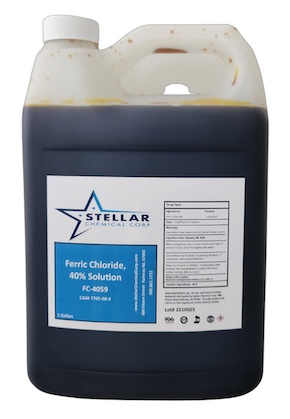
-----
Waste Water Treatment of Electroless Nickel Plating
2000
Can anybody suggest an effective technique for treating spent bath (electroless nickel plating) from our process bath. We use nickel sulphate, sodium hypophosphite, wetting agents and ammonia ⇦ on eBay or Amazon [affil link] for pH adjustment in the process. Currently, for our waste water treatment we use CaCl2, NaBH4 and adjust the pH to 9.0, precipitate settles and then filter press. We still have 50 to 100 ppm nickel.
Could anybody please suggest any more effective treatment techniques or precipitating agents that might be more effective to remove nickel. Your suggestions are highly appreciated. Thanks in advance. Josephine
Josephine C. Lee- Taipei, Taiwan
Here in the U.S. the problem has largely gone away for plating shops since many vendors take back the exhausted solutions for recycling. But two non-chemical methods you might wish to consider are:
1). Electrolytic plate-out (in practice this is often used in combination with ion-exchange; ion-exchange removes nickel to very low ppm, then the resin is regenerated and the regenerant and backwash solutions are what is actually electrolytically treated).
2). Spontaneous plate-out onto steel wool ⇦ on eBay or Amazon [affil link] . letter 4492 covers this idea in additional detail.

Ted Mooney, P.E.
Striving to live Aloha
finishing.com - Pine Beach, New Jersey
Ted can be retained for immediate
answers or long term project help
2000
Hello Josephine, I believe that electroplating is the method of choice. There is, however, some things to consider. The effectiveness, where most of the energy is used to plate metal is greatest in a very narrow pH-range. Between 8.5-9.
You must use "large area, steel wool" cathodes. When this solution gets electroplated some kind of organic is formed as a result of anodic oxidation. It smells almost like formaldehyde. I put in carbon filters in the plating equipment and let the solution go through these. After plating is done, there is a question of the hypophosphate. If it is possible to discharge then ok. Otherwise you have to treat it with ferric chloride ⇦ on eBay or Amazon [affil link] or your carbonate and filter press it. Sven
Sven- Sweden
2000
You can use vacuum distillation for your plating wastes coupled with IX and other technologies you can recover and reuse much of your electroless nickel plating process chemistry
David Delasanta- Worcester, Masssachusetts
July 28, 2008
Q, A, or Comment on THIS thread -or- Start a NEW Thread
